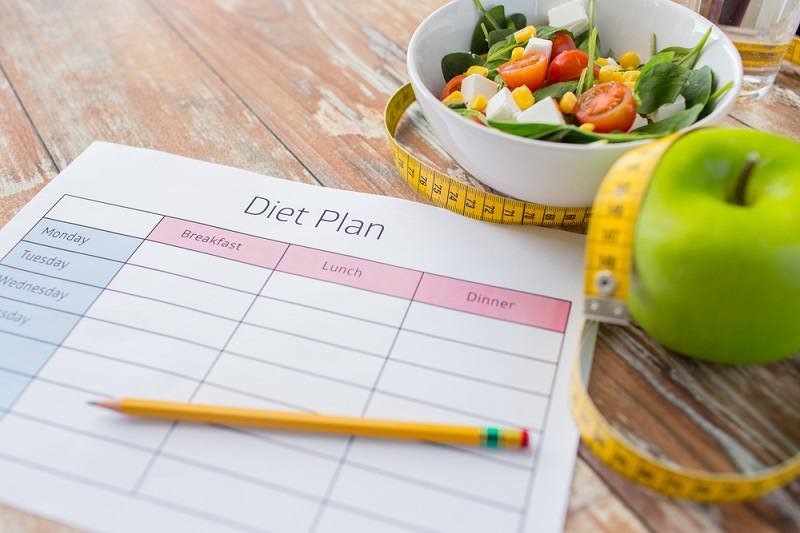Scopolamine is a medication to treat stomach, intestinal, or intestinal cramps urinary tract. Scopolamine is also known as hyoscine. Hyoscine consists of two types, namely hyoscine butylbromide and hyoscine hydrobromide.
Hyoscine butylbromide It is available in tablet, caplet, and injectable form. In addition to treating stomach, intestinal, or bladder cramps, hyoscine butylbromide can also be used to relieve symptoms of the disease irritable bowel syndrome (IBS).

Hyoscine hydrobromide available in tablet form and transdermal patch. This medication is used to treat motion sickness, nausea, vomiting, or vertigo.
Scopolamine belongs to the class of anticholinergic drugs. This drug works by blocking the action of acetylcholine on the central nervous system, so it can calm and relax the muscles of the digestive tract and urinary tract.
Scopolamine trademark:Buscopan, Buscotica, Gitas, Hyorex, Scobutrin, Scopamin, Scopamin Plus
What's that Scopolamine
| group | Prescription drugs |
| Category | Anticholinergic |
| Benefit | Hyoscine butylbromide used to relieve stomach, intestinal, or urinary tract cramps, symptoms irritable bowel syndrome.Hyoscine hydrobromide used to treat motion sickness, nausea, vomiting, and vertigo |
| Used by | Adults and children |
| Scopolamine for pregnant and lactating women | Category C:Animal studies have shown adverse effects on the fetus, but there are no controlled studies in pregnant women. Drugs should only be used if the expected benefit outweighs the risk to the fetus. Scopolamine can be absorbed into breast milk. If you are breastfeeding, do not use this medicine without telling your doctor. |
| Drug form | Tablets, caplets and injections |
Precautions Before Using Scopolamine
Before using this drug, you need to pay attention to the following points:
- Tell your doctor about any allergies you have. Scopolamine should not be used by patients who are allergic to this drug.
- Tell your doctor if you have angle-closure glaucoma, intestinal obstruction, can't urinate, myasthenia gravis, or severe lung disease. Scopolamine should not be given to patients with these conditions.
- Tell your doctor if you have or have had an enlarged prostate, bladder blockage, kidney disease, liver disease, asthma, heart disease, high blood pressure, hyperthyroidism, head injury, colitis, or a brain tumor.
- Do not drive a vehicle or do activities that require alertness after using scopolamine, as this medicine may cause drowsiness or blurred vision.
- Tell your doctor if you are taking certain medications, supplements, or herbal products.
- Tell your doctor if you are pregnant, plan to become pregnant, or are breastfeeding.
- See your doctor right away if you have an allergic reaction to the drug, serious side effects, or an overdose after using scopolamine.
Dosage and Rules for Use Scopolamine
The following is a dose of scopolamine orhyoscine butylbromide based on the condition, form of drug, and age of the patient:
Condition:Irritable bowel syndrome
Shape: Tablet
- Mature: 10 mg, 3 times a day. If needed, the dose may be increased to 20 mg, 4 times daily.
- Children ages 6–11 years: 10 mg, 3 times a day.
Condition: Stomach cramps due to digestive tract or urinary tract disorders
Shape: Tablet
- Mature: 20 mg, 4 times a day.
- kids age6–11 years:10 mg, 3 times a day.
Shape: Inject
- Mature: 20 mg, injected into a muscle (intramuscularly/IM) or into a vein (intravenous/IV). The maximum dose is 100 mg per day.
Hyoscine hydrobromide used to treat motion sickness, nausea and vomiting, or vertigo. The dose will be determined by the doctor according to the patient's condition.
How to use Scopolamine Correctly
Follow the doctor's advice and read the information listed on the drug packaging label before using scopolamine. Do not reduce or increase the dose without consulting your doctor first.
Injectable scopolamine will be given by injection through a vein (intravenous/IV) or into a muscle (intramuscular/IM) by a doctor or medical officer under the supervision of a doctor.
Scopolamine tablets can be taken before or after meals. Swallow the tablet whole with the help of a glass of water. Do not crush or chew the tablet before swallowing.
If you forget to take scopolamine tablets, it is advisable to take them immediately if the interval between the next consumption schedule is not too close. If it is close, ignore it and do not double the dose.
Store scopolamine at room temperature and avoid direct sunlight. Keep this medicine out of reach of children.
Scopolamine Interactions with Other Drugs
The following are some drug interactions that can occur when scopolamine is used with other drugs:
- Increased risk of side effects, such as dry mouth, constipation, difficulty urinating, or blurred vision, when used with ipratropium, amantadine, amitriptyline, haloperidol, olanzapine, or chlorpheniramine
- Increased risk of irritation and injury to the digestive tract when used with potassium supplements
- Increased risk of occurrence heat stroke when used with topiramate or zonisamide
- Decreased effect of each drug when used with domperidone or metoclopramide
Scopolamine Side Effects and Dangers
Some of the side effects that can occur after using scopolamine are:
- Dry skin or mouth
- Blurred vision
- Feeling tired or sleepy
- Dizzy
- Constipation
- Pain or difficulty urinating
Check with your doctor if the side effects above do not subside immediately or are getting worse. You need to see a doctor immediately if you experience an allergic drug reaction or more serious side effects, such as:
- Difficulty swallowing or breathing
- Fast or pounding heartbeat
- Severe stomach ache
- Red eyes, eye pain, blurred vision, or seeing a halo
- Confusion or hallucinations
- Severe nausea or vomiting
- Seizures









